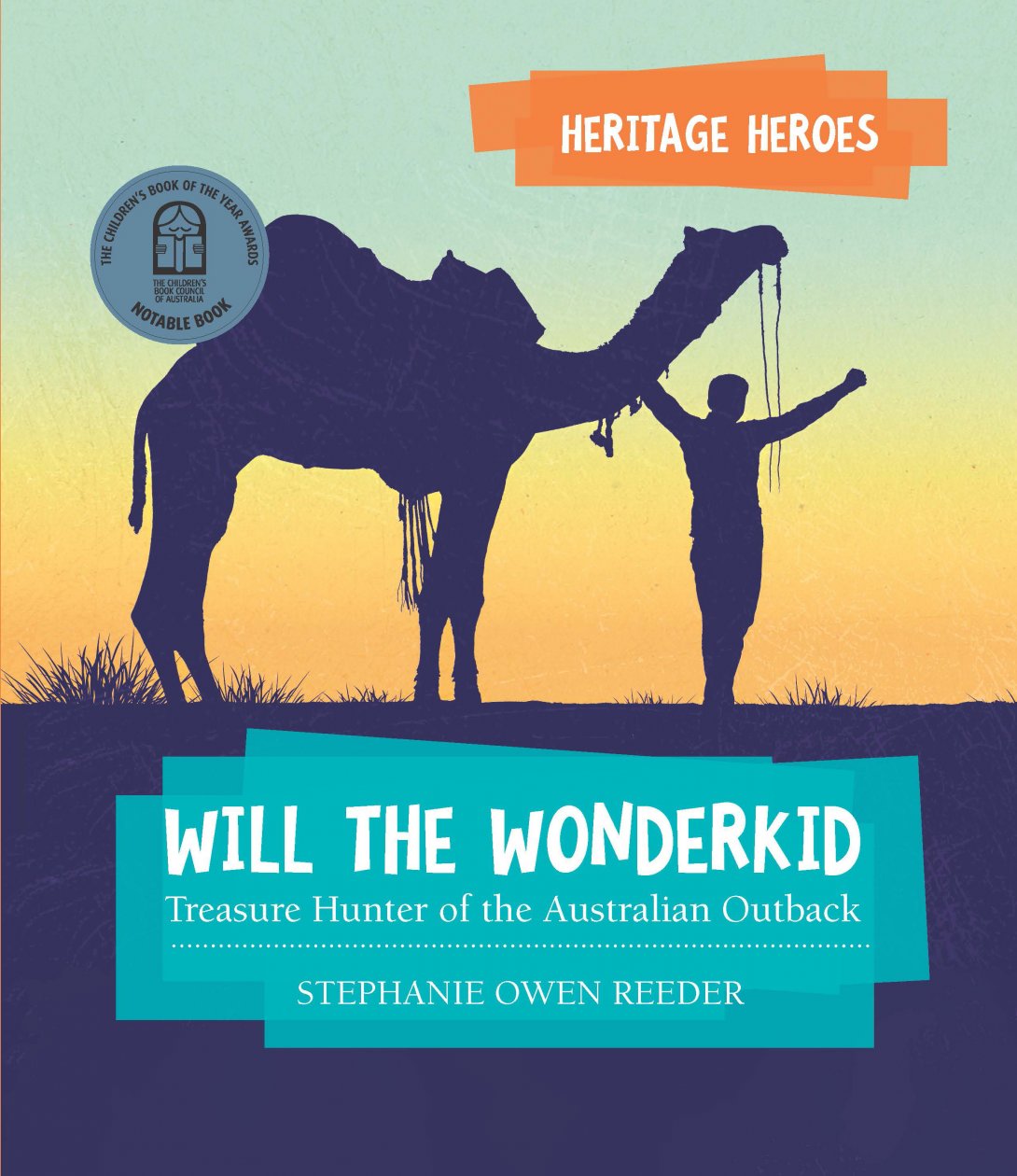By Stephanie Owen Reeder
One of my favourite activities is hunting for treasure on the National Library of Australia’s Trove website. I’m always on the lookout for fabulous stories about children from Australia’s past doing amazing things against the odds. So I was delighted when I discovered Will Hutchison, a true treasure hunter from the Australian outback.
I’ve written about Will in the fifth book in my award-winning Heritage Heroes series. The hardcopy version of Will the Wonderkid: Treasure Hunter of the Australian Outback came out in February 2020. A book launch was planned for March, and I’d bought a fabulous new scarf to wear, decorated with camels. But then the pandemic hit, the launch was cancelled and Will the Wonderkid went out into the world without fanfare.

Luckily, it’s a fabulous story of resilience and survival against the odds, and so the book sold well despite the restrictions of COVID lockdowns. Now the Heritage Heroes flexicover edition is available, complete with a CBCA Notable Book Award sticker on the front cover.
Will the Wonderkid retells the remarkable story of teenager Will Hutchison who, in December 1914, at the height of a terrible drought, set out with his dad and two other explorers to look for gold in outback South Australia. They didn’t find any gold, and their situation soon became desperate. So the men went off in different directions searching for water, leaving Will all alone at their campsite with only camels for company. Ironically, in the end it was the resilient teenager who found both water and treasure––he discovered the opal fields of Coober Pedy!
Retelling this true story was a bit like riding a camel in the desert––it had its ups and downs! As with my other Heritage Heroes books, I was determined to stay true to the historical facts available through both primary and secondary sources. I started by consulting hundreds of newspaper articles. This in itself was no mean feat, as Will’s surname was often misspelt and his first name varied from ‘Bill’ to ‘Will’, ‘Willie’ and ‘William’.
I also studied memoirs held in the National Library collections. They were written by people who travelled by camel in the Australian outback during the early part of the twentieth century. These accounts provided invaluable details about riding camels, travelling in the outback and practising bushcraft.
I was also lucky enough to get in contact with members of the Hutchison family. Will’s nephew, Tony Hutchison, provided me with a wealth of insights, information, photographs, telegrams, letters and other family memorabilia that I could not have sourced elsewhere. Some of them are included in the book. Such material makes a big difference for an author like me who’s trying to recreate a moment in time featuring real people.
However, as with any fictionalised historical retelling, there were details of Will’s story that I couldn’t corroborate and parts that I had to imaginatively re-create. These include the names of the expedition’s camels, Will’s experiences while alone in the desert and the personalities of his companions.
I also had to research the information sections in the book that covered topics like The Ghan and the Afghan cameleers who inspired its name, the remarkably weird and wonderful attributes of camels, the much-treasured Australian opal and the unique town of Coober Pedy.
And I thoroughly enjoyed hunting through the Library’s vast collections for the images that feature throughout the book––including the flies crawling across some of the pages! My searches of the NLA Catalogue unearthed illustrations from a selection of nineteenth and early twentieth century ‘boys’ own adventure’ novels, along with paintings, posters, photographs, advertisements, book covers, greeting cards, newspaper cuttings, and even a recipe for damper.
I’m so pleased that Will is now a part of the Heritage Heroes family, along with Jane, Isaac and Frankie Duff in Lost!; Grace Bussell and Sam Isaacs in Amazing Grace; Lennie Gwyther and his pony Ginger Mick in Lennie the Legend; and May Wirth in Marvellous Miss May.
So far, my Heritage Heroes books have covered every Australian state and territory – except Tasmania. I’m currently working to redress that with a story about six children marooned on an island in Bass Strait in the 1890s. Hunting for historical treasures like this has obviously become an obsession, and I’m always on the lookout for the next gem of a true tale to add to my treasured collection!